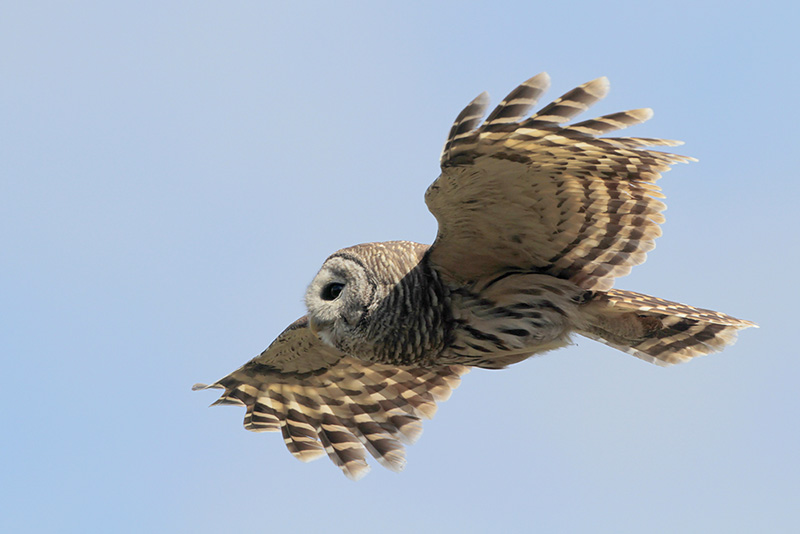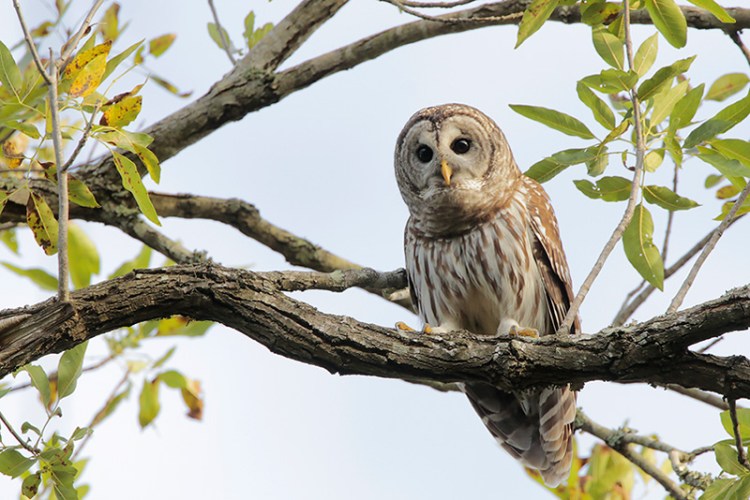Barred Owl (Strix varia)
Family: Strigidae
By Grace Yaros, Houston Audubon Coastal Conservation Technician
Named for the horizontal brown stripes along the top of their chest, Barred Owls are large, brown-and-white owls with black eyes and striped underparts. They can be distinguished from the similarly large Great Horned Owl by their dark eyes and the lack of tufts on their head. They’re found in wooded areas, usually near water, where they feed on a variety of small mammals, snakes, lizards, and even other birds. Barred Owls are sit-and-wait predators, and will search for prey from a high perch before pouncing. Like most owls, they are mostly nocturnal, though they are frequently active during the day as well.
Their range encompasses much of North America east of the Great Plains, and they have recently colonized parts of the Northwest, where they compete with the declining Spotted Owl. Despite this expansion westward, Barred Owls are nonmigratory, though individuals may become temporarily nomadic and travel in search of food if prey is scarce.
They make a variety of hooting calls; a popular pneumonic for their song is “Who cooks for you? Who cooks for you all?” Barred Owls are highly territorial, and use these hoots to advertise their presence and ward off intruders. Mated pairs will often duet with each other. It’s thought that pairs mate for life, usually raising between 1-3 young per year.
There are currently three recognized subspecies of Barred Owl, one of which is found only in southern Texas! Barred Owls can be found at the Edith L. Moore Nature Sanctuary in Houston, where you can listen for their hoots or watch one resting high in a tree during the day!



Visit our Bird Gallery to read about other Texas birds!

